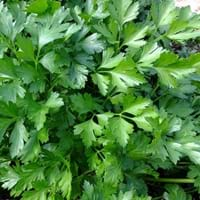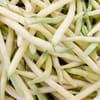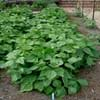Life Span
Annual
Annual or Biennial
Origin
Central America, South America
Southern Europe
Types
Willow Leaf, Sieva Lima, Dixie Speckled
Not Available
Habitat
Humid climates, Subtropical climates, Warmer regions
Subtropical climates, Temperate Regions
USDA Hardiness Zone
6-11
5-9
AHS Heat Zone
Not Available
9-1
Sunset Zone
Not Available
A3, 1a, 1b, 2a, 2b, 3a, 3b, 4, 5, 6, 7, 8, 9, 10, 11, 12, 13, 14, 15, 16, 17, 18, 19, 20, 21, 22, 23, 24
Habit
Vining/Climbing
Clump-Forming
Minimum Width
Not Available
Flower Color
White, Ivory
Yellow green
Flower Color Modifier
Bicolor
Bicolor
Fruit Color
Green
Sandy Brown
Leaf Color in Spring
Green
Green, Dark Green
Leaf Color in Summer
Green
Green, Dark Green
Leaf Color in Fall
Green
Green, Dark Green
Leaf Color in Winter
Green
Not Available
Leaf Shape
Willow-shaped
Pinnate
Plant Season
Not Available
Spring, Summer, Fall
Sunlight
Full Sun
Full Sun, Partial Sun
Type of Soil
Loam, Sand
Loam, Sand
The pH of Soil
Acidic, Neutral, Alkaline
Neutral
Soil Drainage
Well drained
Well drained
Bloom Time
Indeterminate
Early Summer, Summer
Tolerances
Drought
Drought
Where to Plant?
Container, Ground, Pot
Ground
How to Plant?
Seedlings
Seedlings, Transplanting
Plant Maintenance
High
Medium
Watering Requirements
Allow to dry out slightly between watering, Do Not over Water, Requires regular watering
Average Water Needs, Requires regular watering
In Summer
Not so frequently
Lots of watering
In Spring
Alternate Days
Moderate
In Winter
Drought Tolerant
Average Water
Soil pH
Acidic, Neutral, Alkaline
Neutral
Soil Type
Loam, Sand
Loam, Sand
Soil Drainage Capacity
Well drained
Well drained
Sun Exposure
Full Sun
Full Sun, Partial Sun, Partial shade
Pruning
Prune to control growth
Remove damaged leaves, Remove dead branches, Remove dead leaves
Fertilizers
organic fertlizers
All-Purpose Liquid Fertilizer
Pests and Diseases
Aphids, Armyworm, Bean rust, Bean weevils, Corn earworm, Cucumber beetles, Curly top, Damping off, Darkling beetles, Earwigs, Fusarium root rot, Grasshoppers, Leafhoppers, Loopers, Lycaenid pod borers, Lygus bugs, Mosaic viruses, Nematodes, Powdery mildew, Saltmarsh caterpillar, Seedcorn maggot, Slugs, Snails, Spider mites, Stink bugs, Thripes, White mold, Whiteflies
bees, Birds, Caterpillars, Red blotch
Plant Tolerance
Drought
Drought
Flowers
Insignificant
Showy
Flower Petal Number
Single
Single
Fragrant Flower
Not Available
No
Fragrant Fruit
Not Available
No
Fragrant Leaf
Not Available
Yes
Fragrant Bark/Stem
Not Available
Yes
Showy Bark
Not Available
No
Foliage Texture
Medium
Medium
Foliage Sheen
Matte
Glossy
Self-Sowing
Not Available
Yes
Attracts
Not Available
Butterflies
Allergy
Not Available
Anaphylaxis, angioedema, Rhinitis
Aesthetic Uses
Not Available
Not Available
Beauty Benefits
Not Available
Not Available
Environmental Uses
Not Available
Air purification
Medicinal Uses
cholesterol-lowering, constipation, Digestive disorders, Fiber, Heart problems
Antioxidants, Vitamin A, Vitamin B, Vitamin K
Part of Plant Used
Seeds
Leaves, Stem
Other Uses
Used As Food
Used as a nutritious food item, Used for its medicinal properties
Used As Indoor Plant
No
Yes
Used As Outdoor Plant
Yes
Yes
Garden Design
Edible, Herb, Vegetable
Edible, Herb, Vegetable
Botanical Name
PHASEOLUS lunatus
PETROSELINUM crispum 'Afro'
Common Name
Butter Bean, Lima Bean
Parsley
In German
Limabohne
Petersilie
In French
Haricot de Lima
Persil
In Greek
Γίγαντας
Μαϊντανός
In Portuguese
feijão-Lima
Salsa
In Polish
Lima Bean
Pietruszka
Phylum
Tracheophyta
Tracheobionta
Class
Magnoliopsida
Magnoliopsida
Genus
Phaseolus
Petroselinum
Clade
Angiosperms, Eudicots, Rosids
Angiosperms, Asterids, Eudicots
Tribe
Phaseoleae
Not Available
Subfamily
Faboideae
Not Available
Number of Species
Not Available
Not Available
Importance of Lima Bean and Parsley
Want to have the most appropriate plant for your garden? You might want to know the importance of Lima Bean and Parsley. Basically, these two plants vary in many aspects. Compare Lima Bean and Parsley as they differ in many characteristics such as their life, care, benefits, facts, etc. Every gardener must at least have the slightest clue about the plants he wants to plant in his garden. Compare their benefits, which differ in many ways like facts and uses. The medicinal use of Lima Bean is cholesterol-lowering, constipation, Digestive disorders, Fiber and Heart problems whereas of Parsley is Antioxidants, Vitamin A, Vitamin B and Vitamin K. Lima Bean has beauty benefits as follows: Not Available while Parsley has beauty benefits as follows: Not Available.
Compare Facts of Lima Bean vs Parsley
How to choose the best garden plant for your garden depending upon its facts? Here garden plant comparison will help you to solve this query. Compare the facts of Lima Bean vs Parsley and know which one to choose. As garden plants have benefits and other uses, allergy is also a major drawback of plants for some people. Allergic reactions of Lima Bean are Not Available whereas of Parsley have Anaphylaxis, angioedema and Rhinitis respectively. Having a fruit bearing plant in your garden can be a plus point of your garden. Lima Bean has no showy fruits and Parsley has no showy fruits. Also Lima Bean is not flowering and Parsley is not flowering . You can compare Lima Bean and Parsley facts and facts of other plants too.





